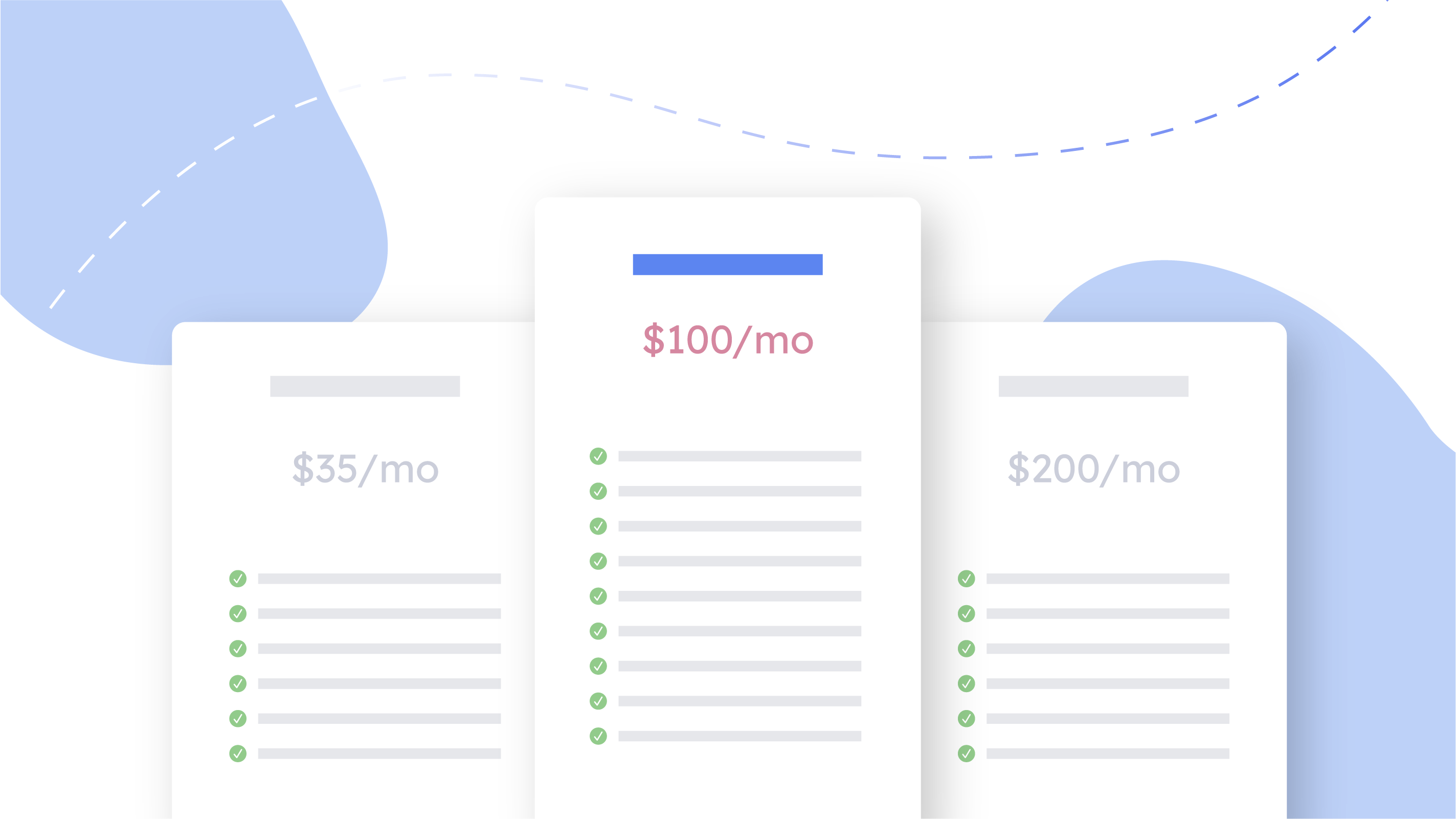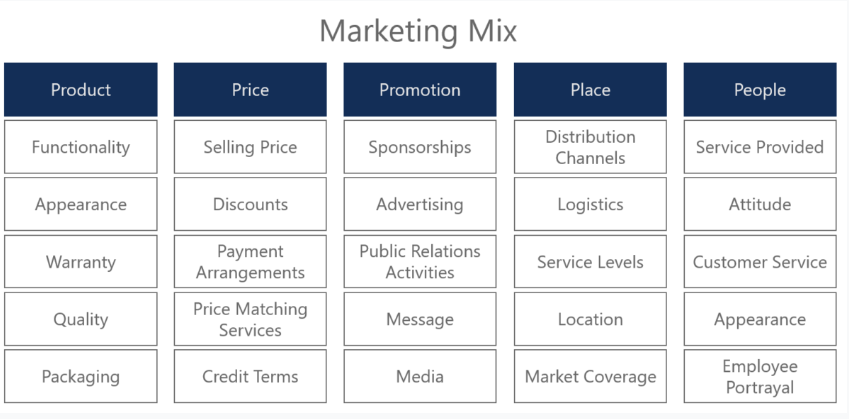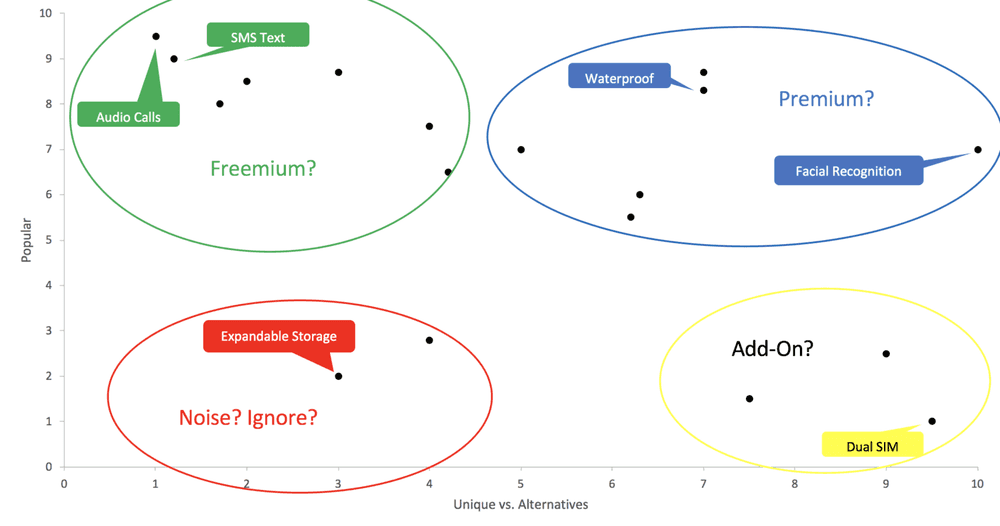A Practical Playbook for Product-Market Fit in SaaS
Product-market fit can be difficult to define. We examine what product-market fit is in SaaS and how to maintain it.

Finding a place for your product in the market is hard. Your industry is over-saturated with companies all claiming to solve for the same thing. But you’re unique. You solve that problem better than the competition. Okay great. We believe you. But what now? What differentiates you from the rest? And how can you position yourself for success?
At Kalungi, we use a few different ways to help our clients answer these questions. In order to position yourself successfully, you need to understand what your positioning is, what your clients will pay for it, how to promote it, where to promote it and to whom - the 5 P’s of marketing. It may seem obvious, but having a deep understanding of this rule of thumb will make the rest of your positioning much easier. Permission based marketing, or Inbound Marketing, is another incredibly important piece of the puzzle. Understanding that reaching out to those who have opted-in to receive information from you are much more likely to become leads and then move down the funnel.
Knowing who you are and why you do what you do leads us to implementing the Feature Matrix and understanding pricing options. Implementing the Feature Matrix will allow you to figure out which parts of your product are the most unique and what differentiate you the most from your competition. All of this helps determine which pricing model is right for your company and product. Is value-based or cost-based or even market-based pricing best for you? This blog will help alleviate some of the pain of the unknowns and help position you for success.
If you’re considering launching a new product or want to look into your product or company’s Go to Market Strategy, you should consider using the 5 P’s. Few frameworks are as famous within the realm of product marketing as this one. The 5 P’s allows you to organize product marketing within 5 categories that focus the Go to Market Strategy of your product and allows you to position it for success, especially in competitive markets.

Product encompasses how you position your product within the market and answers the question “What’s it for?”. What features does your product possess or what benefits does it provide that are unique in the marketplace? Which of those are really popular amongst your customers? As you can see above, these features and benefits can take a wide variety of appearances, depending on the industry you play in and what strengths your product has. This could be speed, user interface, user experience, customer service, bandwidth, integrations, etc. As you can see, this list can get out of hand quickly without focus so we like to use the feature matrix to help us decide which features are the best to highlight in our Go to Market (see below). For company-specific GTM strategy, this information can also be obtained from the Best, Better, Only exercise.
When entering a new market or launching a new product, pricing is arguably the most difficult piece to implement. If you don’t spend the time to appropriately price your product or service, you can unwittingly enter a price war, unnecessarily leave money on the table, or dissuade potential customers that could be a great fit.
As a result, it’s really important to solidify a comprehensive pricing strategy for your product and service. We like to help our clients achieve this by using the feature matrix exercise (mentioned below), and combining it with our own pricing theory. Once you’ve solidified your selling price, you can build in additional pricing strategies such as discounts, price matching, and credit to further differentiate your service.
Now that you’ve established how your product is differentiated from the competition and how you’ll price it in the marketplace, it’s time to build a strategy around how you will promote your product. This area of the framework answers the question “Where can a customer find your product?”. Similar to product differentiation strategy, these tactics can take many different forms, depending on the industry you’re in: advertising, sponsorships, public relations, events, etc.
These promotional activities can add up quickly and can easily blow up a marketing budget if they don’t go unchecked, so it’s important to plan these out in advance, to ensure that you give your product the visibility it deserves, while keeping your marketing budget intact. This is also a great opportunity to consider the unit economics behind your product. Do you want to make sure that your Customer Acquisition Cost is below your Average Revenue per Unit (or User)? Or do you want to lose money, per unit/user, to gain market share quickly?
(At Kalungi, we often advise our early stage clients to actually avoid advertising. To learn more about why we do, look at this blog.)
The place section refers to how you’re going to sell your product or service. Are you going to sell direct, use a channel strategy, or white label your product? Are you going to utilize any marketplaces to sell your product? Think about your ideal customers and how they receive information and where they shop. If your customers shop in places that are hard for your company to reach, it could be a good idea to use a channel strategy or a partnership to quickly gain market share. However, know that when you choose many channel strategies, you may end up paying for the extra reach or capability they give you with some of your profits. What is more important for your company, marketshare or profits? Finding the balance between these two factors is key when building your channel strategy. (to learn more about incorporating a strategy into your GTM Strategy, look at this blog.)
Finally, you must decide what people and businesses you’re going to sell your product to. This area answers the question “Who’s it for?”. Who did you build your product for? Who’s problems does your product or service solve? Use this section to really get to know your customer. You can start this process by defining your Ideal Customer Profile to get an example of a fantastic customer. Once you do that, think about the people that you typically interact with, throughout the sales cycle. After all, B2B marketing is just like B2C marketing, but you have to convince prospects to spend other people’s money. With this information, you can build the three personas you’ll sell to. These two exercises will help you get a comprehensive understanding of your market, how to look for them, and what they care about.
At Kalungi, we like to add a sixth P to the framework: Permission. This area highlights how you will gain permission from your prospects to communicate with them. Unlike promotion, which is all about paying to get your message out there, permission is about providing content that interested parties can find on their own, and that is so useful that they will raise their hands for you to continue communicating with them. If permission-based marketing (also known as inbound marketing) is done the right way, it can cause exponential growth for your company, as you’ve built a system that takes people down your sales funnel, with no additional work from you. Not surprisingly, this type of marketing is critical for B2B SaaS marketing. However, it isn’t the end-all be-all of marketing. It is essential that you balance inbound and outbound marketing because only balancing both will drive quick, explosive, and sustained growth for your business. (for more information on how to strike the right balance between inbound and outbound marketing, check out this blog.)
How do you decide which features are most important? And which of those help differentiate your product from the rest of the playing field. Which should be left of your website entirely?
One of the last puzzle pieces for the foundation for your positioning and messaging is your product pricing mix. To better understand this, we use a feature matrix.
Before you jump in, there are a couple things to consider.
Complete a new matrix for each unique product
For example, if you have three separate solutions that are sold to different customer groups, you should complete three different matrices. If you sell a single-solution SaaS product, you only need to complete one. An alternative to this is to complete one matrix and use different colored sticky notes (or tags) to denote different products.
This is just an exercise
It’s not a perfect science. Since most of the inputs will come from your team – the accuracy of the final output will depend on their understanding of the product and your customers. That said, it doesn’t need to be perfect – this is a quick way to start building out your product pricing strategy, product marketing messaging and sales enablement materials.
First, compile a list of your product’s features and capabilities. If you’re not sure where to start,your website is a great place to mine. If you’re completing this exercise for the first time with your leadership team, it’s a good idea to include everything – even if outdated or inaccurate features. More on why we do this a little later.
Then rank your features on a scale 1–10 scale against two metrics: market relevance and competitive differentiation.
To get input from multiple team members, we put all of the features into an anonymous survey.
Once you’ve collected all of the information, average out the answers to come up with a single “relevance” and “differentiation” score for each feature.
Then plot your features on a matrix. You should have something like this:

We recommend having a workshop to discuss and tweak the resulting feature matrix above. We replicate the matrix on a whiteboard with sticky notes (remote teams can use Stormboard – we love it).
This workshop is designed to help you get clear as a group. You’ll likely find features that don’t make sense, don’t belong, or you decide should be described differently. You’ll combine some, remove some, and likely add some features to the mix as well.
Now that you’ve created your feature matrix it is time to put pricing models to work.
This is the tier where you don’t expect the majority of your customers to fall under, but utilize it as a way to give them an intro to the product / service and create an upsell path to help get people moving from freemium to premium. It can be also used as a tool to show the value of the hero product by comparison – the decoy may be something that is extremely affordable, but not necessarily what the customer wants, they would have to go to the premium offering to get exactly what they were looking for.
This is the tier where the majority of your customers will fall into, where you expect most of your customers to buy from you. If you’ve done your matrix correctly, this is the tier where users will experience all the differentiated features your product/ services offer that many will use.
This is the tier where you utilize it to capture customers who want a full experience from your product – the works. As such, you’ll be able to charge a premium price for such offerings, this in turn will make the hero look more affordable. It helps anchor the expectations of what is possible and grounds the perception of price in the minds of the customers.
Over the years, several publications and influencers have come out with their own supplementary Ps. Amidst our unending digital transformation, some new Ps that are more relevant to a present marketer’s day-to-day digital work than to the overall strategy and positioning of the business. Permission is one of them, which we mentioned above. With the tools at marketers’ disposal nowadays, it’s important not to overstep, and just because you can force someone to be exposed to your content, doesn’t mean you should. Permission is important because people are more receptive to what you have to say if they opt in to it. Here are a few more taken from around the marketing sphere, and more specifically
Speaking of the current marketer’s tools, it would be a waste not to try and personalize your content and messaging to your audience. You may not have to go the algorithmic personalization route like Netflix, music platforms, or e-commerce sites where customers are recommended products based on their demonstrated tastes and interests. It could simply just be remembering what action a customer took last time they were on your site, retargeting, or just adding a specific detail about them like their name when addressing them. That said, 1:1 personalization is ambitious, and while it could be in reach of most businesses, you must be calculated in your decision to embark on that endeavor. Instead, you can do away with AI and algorithmic personalization in favor of a broader, more segmented approach. Keep in mind, though, that although customers engage at much higher rates with personalized content, segment-based personalized content can also be wrong for a portion of your client base.
Even if you are not pursuing 1:1 personalization (individualization), ensuring your online ad presence is pervasive can give the illusion of personalization. Multi-channel marketing requires the ability to follow your customer through their multi-touch buying journey, especially since 50% customers use up to four channels before making a purchase. Ensuring your marketing is cohesive and coherent across these channels is imperative. The alternative would be for a customer to see copy relating to something no longer relevant to them, which is a more negative outcome than no attempt at personalization in the first place.
Managing to be spot-on with personalized, timely, pervasive marketing can be hard without the right data at the right time. Hopefully you already are collecting your own data from your consumers’ behavior through different analytics tools and handling them with data hygiene best practices. It might be worth considering going the extra step and cutting off third party data moats entirely in the favor of your own first party proprietary data. There are several tools that can help you achieve that such as CDPs (Customer Data Platforms) and more specific tools like Microsoft Clarity.
With the right data, you will even be able to be predictive in your marketing. Anticipating your customers’ needs is the holy grail. With the new tools and data, marketers can have more agency in the middle and bottom of the funnel as well, not just the top. You can not only gain insight on who your customers are today but also predict who’s going to become tomorrow. This harkens back to the idea of “creating” your customers, creating your demand, and investing in your customers to create human capital outside your organization just as you would in your staff within your organization. Stabrucks for example created its own customers: coffee connoisseurs, who have a higher lifetime value because they are more receptive to new offers and innovations. Likewise, through valuable content you can shape your customers or prospective customers to be more valuable to you. All of this comes at a risk, Personalization, while valued and expected by more than 60% of customers, can also rub some of them the wrong way. You can imagine predictive marketing might have an even bigger negative impact, which brings us to our last P.
All of the above could massively hurt your marketing function if you don’t respect your customers’ privacy. The above is based on surveyed customers who value this more technology-based approach, but not everyone has hopped on that train yet. If you don’t want to be on the news or have to appear to testify before Congress, or if you just don’t want to lose customers you could have easily kept, simply allow your customers to give you their permission before marketing to them. Thankfully, the EU with their GDPR and California with its new privacy act can help guide your privacy policy. Customer data is valuable, but it holds no value if using it is detrimental to your business. Authenticity and transparency are two of the most highly-rated qualities in businesses’ marketing and for good reason. With greater control over their data, customers will be more comfortable and thus more likely to engage with you. This list is a good place to start.
With these considerations in mind, you will be better equipped for your Go-To-Market and have more salient insights as to your positioning, which will in turn inform your messaging, and the rest of your marketing strategy.
As a creative professional with experience in visual content creation, digital marketing, and sales, Kaia brings her passion and energy to every project.
Product-market fit can be difficult to define. We examine what product-market fit is in SaaS and how to maintain it.
Communicating what your product does and why it's important is at the core of effective SaaS sales and marketing. Use this blog as a guideline to...
Developing your pricing strategy for SaaS products is one of the most strategic activities of the SaaS Chief Marketing Officer. Learn about our SaaS...
Be the first to know about new B2B SaaS Marketing insights to build or refine your marketing function with the tools and knowledge of today’s industry.